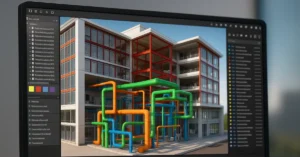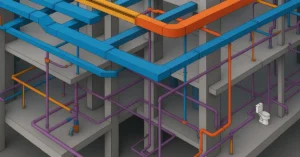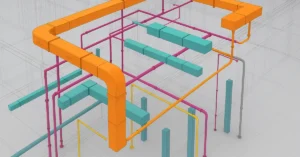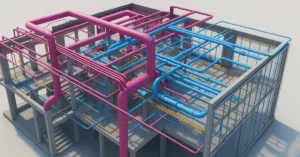Exploring Brutalist Buildings in Monterrey
Monterrey, Mexico, is a city known for its industrial strength, economic significance, and architectural diversity. Among its many styles, Brutalist architecture stands out for its raw concrete aesthetics, geometric designs, and imposing structures. Whether viewed as a bold artistic statement or an unpolished urban feature, these buildings define a period of architectural evolution in Monterrey. This guide explores some of the most striking Brutalist buildings in the city and their unique contributions to its skyline.
What is Brutalist Architecture?
Brutalism, originating in the mid-20th century, is an architectural style that emphasizes raw concrete (“béton brut”), strong geometric forms, and a sense of functionality. It was widely used for government, educational, and institutional buildings due to its cost-effective and durable design. In Monterrey, this style emerged as part of the city’s rapid modernization, resulting in unique structures that continue to captivate architectural enthusiasts.
Monterrey’s Must-See Brutalist Buildings
1. CONARTE (Centro de las Artes de Nuevo León)
Location: Parque Fundidora, Monterrey, Mexico
Architect: Alejandro Aravena
Year: 2007
CONARTE, the Arts Center of Nuevo León, is a prime example of modern Brutalism. With its massive concrete walls, sharp geometric angles, and industrial aesthetic, this building embodies a blend of functionality and artistic expression. The adaptive reuse of an old steel foundry further reinforces its rugged, raw aesthetic, making it one of Monterrey’s most visually compelling Brutalist structures.
2. Biblioteca Universitaria Raúl Rangel Frías
Location: Universidad Autónoma de Nuevo León, Monterrey, Mexico
Architect: Mario Pani
Year: 1959
This university library, designed by the renowned architect Mario Pani, stands as a symbol of Monterrey’s commitment to modern education and architecture. Its strong, unadorned concrete structure, large vertical windows, and rigid geometric forms make it an exemplary work of Mexican Brutalism. The contrast between its imposing exterior and functional interior reflects the essence of this architectural movement.
3. Facultad de Ingeniería Mecánica y Eléctrica (FIME), UANL
Location: Universidad Autónoma de Nuevo León, Monterrey, Mexico
Architect: Unknown
Year: 1970s
The FIME building at UANL is another significant Brutalist structure in Monterrey, known for its raw concrete facade, modular design, and practical layout. Built to accommodate engineering students, its emphasis on structural integrity and minimal ornamentation aligns perfectly with the principles of Brutalism.
4. Torre de Rectoría UANL
Location: Universidad Autónoma de Nuevo León, Monterrey, Mexico
Architect: Mario Pani
Year: 1960s
This towering administration building is a defining feature of the UANL campus, with its rigid concrete exterior and dominating presence. Designed by Mario Pani, the Torre de Rectoría embraces Brutalist principles while serving as a central hub for university operations. The use of concrete and steel in its construction highlights Monterrey’s industrial heritage.
5. CONARTE Library (Biblioteca Conarte)
Location: Parque Fundidora, Monterrey, Mexico
Architect: Bernardo Gómez-Pimienta
Year: 2000s
Housed in an old industrial facility, the CONARTE Library is a masterpiece of adaptive reuse with a strong Brutalist influence. The exposed concrete, high ceilings, and minimalistic design create a striking yet functional space for learning and creativity. Its aesthetic seamlessly integrates with Monterrey’s industrial past while embracing modernist ideals.
The Impact of Brutalism on Monterrey’s Architectural Identity
Monterrey’s rapid industrialization and urban growth in the mid-20th century led to the adoption of Brutalism for various institutional and academic structures. This architectural style was chosen for its durability, cost-effectiveness, and ability to create strong visual statements. Today, these buildings continue to serve as landmarks, reflecting both the city’s past and its ongoing development.
Preservation vs. Demolition: The Future of Brutalist Architecture in Monterrey
As architectural tastes evolve, many Brutalist buildings face the threat of demolition or alteration. While some view them as outdated relics, preservationists argue that these structures are vital to Monterrey’s architectural history. The challenge lies in maintaining their integrity while adapting them for modern use. Efforts to repurpose Brutalist buildings, such as the transformation of CONARTE’s facilities, demonstrate the potential for sustainable preservation.
Why You Should Appreciate Brutalism in Monterrey
Despite its often-criticized aesthetics, Brutalist architecture in Monterrey tells a compelling story about the city’s growth, resilience, and industrial heritage. These buildings, once considered merely functional, are now recognized for their bold and unapologetic designs. Walking through Monterrey and experiencing its Brutalist landmarks firsthand offers a unique perspective on modernist architecture and urban development.
For architecture lovers, exploring Monterrey’s Brutalist buildings provides insight into a transformative era in the city’s history. Whether you admire the raw concrete facades or the structural ingenuity, these buildings stand as a testament to a bold architectural movement that refuses to be ignored.
Final Thoughts
Brutalist buildings in Monterrey may not be conventionally beautiful, but their impact on the city’s skyline and architectural history is undeniable. As debates continue over their preservation, one thing remains clear—these structures are irreplaceable symbols of a time when architecture prioritized strength, functionality, and boldness. Whether you’re an admirer of modernist design or a curious explorer, visiting Monterrey’s Brutalist landmarks will leave you with a deeper appreciation for the raw power of concrete and geometry in shaping the urban landscape.
If you’re interested in learning more about architecture firms in Europe, check out this comprehensive list of the top 50 firms compiled by Archgyan. From innovative startups to long-established industry leaders, this list has it all. Take a look and discover some of the most inspiring and influential architecture firms in Europe today.
If you’re interested in architecture and want to learn more about this amazing field, subscribe to our podcast on youtube
For more SketchUp tutorials, head to https://www.sketchupguru.com










